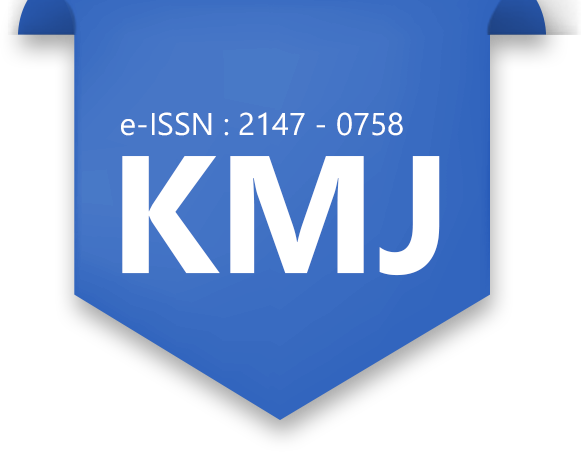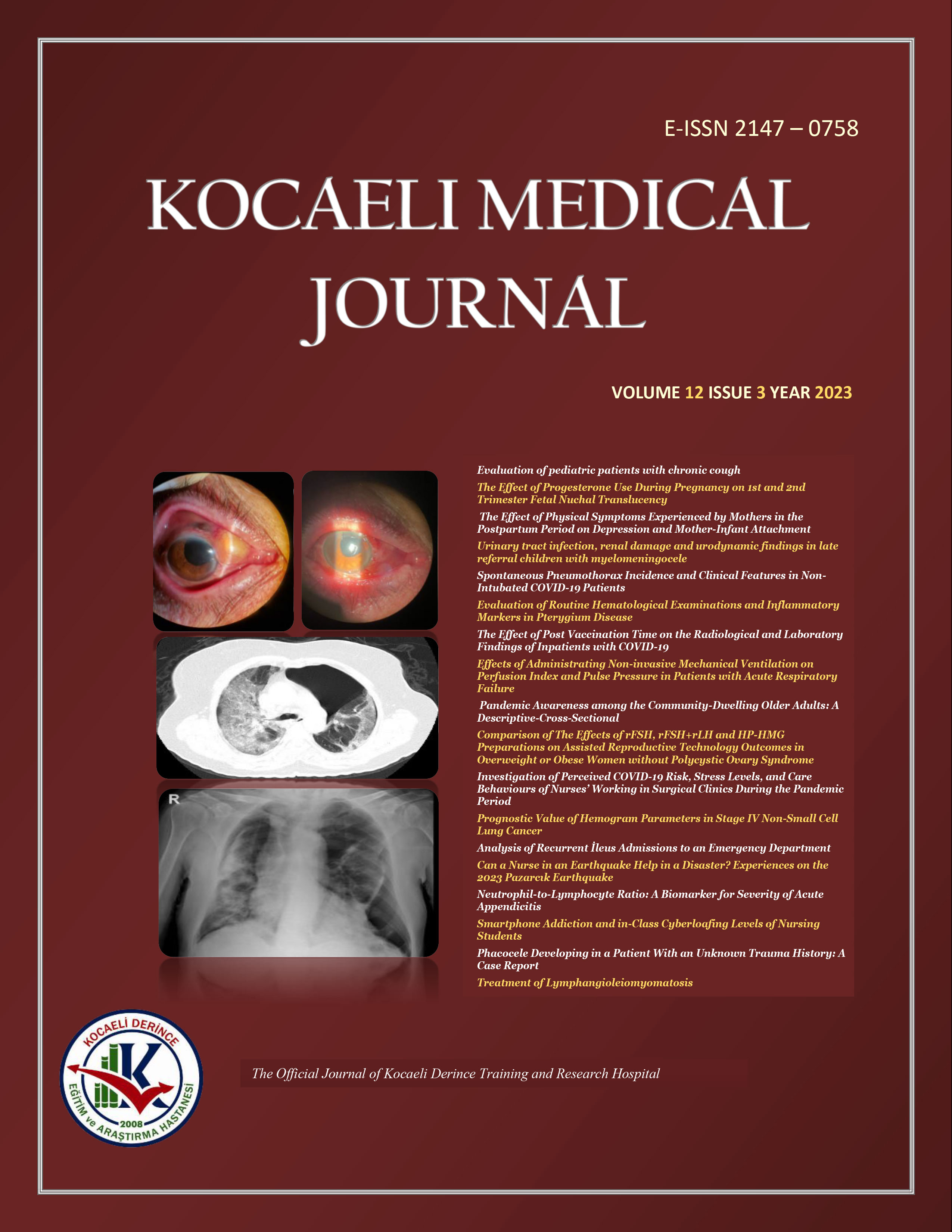
Pelvic Floor Disorder with Advancing Age
Gökmen Sukgen1, Ünal Türkay21Sukgen Gynecology And Obstetrics Clinic, Adana, Turkey2University Of Health Sciences Derince Training And Research Hospital, Derince, Turkey
INTRODUCTION: The increasing life span in the population leads to a rapid increase in the proportion of older women, which in turn requires the prevention and treatment of pelvic floor dysfunctions caused by changes in the pelvic floor with the advancing age. Pelvic floor dysfunction due to pelvic floor changes is an important health problem for women who make up half of the adult population. The objective of this study was to investigate the age range, frequencies and the phases of pelvic floor disorders in women of different ages.
METHODS: In this study, a questionnaire was applied to 30 women in ages ranging from 20 years to 70 years. In line with the results obtained, the age range, the intervals and stages of this disorder were explored.
RESULTS: The highest rate (30%) of complaints was observed to be feeling of urgency which was followed by urinary incontinence (26.7%), mass complaint (20%) and urination disorder (16.7%), while the lowest rate (6.7%) of the complaints was recorded for fecal incontinence. T-test analysis revealed that complaints of women before and after menopause were statistically meaningful.
DISCUSSION AND CONCLUSION: The results suggest that feeling urgency is one of the most common complaints caused by pelvic floor disorders and menopausal status needs to be watched carefully for early detection and proper attention of this disorder.
İlerleyen Yaşta Pelvik Taban Bozukluğu
Gökmen Sukgen1, Ünal Türkay21Sukgen Kadın Hastalıkları Ve Doğum Kliniği, Adana, Türkiye2Sağlık Bilimleri Üniversitesi Derince Eğitim Ve Araştırma Hastanesi, Kocaeli, Türkiye
GİRİŞ ve AMAÇ: Nüfustaki yaşam süresinin artması, yaşlı kadın oranlarında hızlı bir artışa neden olmakta; bu da artan yaşla birlikte pelvik tabandaki değişikliklerin neden olduğu pelvik taban fonksiyon bozukluklarının önlenmesini ve tedavisini gerektirmektedir. Pelvik taban değişikliklerine bağlı pelvik taban disfonksiyonu, yetişkin nüfusun yarısını oluşturan kadınlar için önemli bir sağlık sorunudur. Bu çalışmanın amacı, farklı yaşlardaki kadınlarda pelvik taban bozukluklarının yaş aralığı, frekansları ve evrelerini araştırmaktır.
YÖNTEM ve GEREÇLER: Bu çalışmada 20 ila 70 yaş arasındaki 30 kadına anket uygulanmıştır. Elde edilen sonuçlara göre, bu bozukluğun yaş aralığı, sıklığı ve evreleri araştırılmıştır.
BULGULAR: En yüksek şikayet oranının (%30) aciliyet hissi olduğu, bunu idrar kaçırma (%26.7), kitle şikayeti (%20) ve idrar bozukluğu (%16.7) takip ederken şikayetlerin en düşük oranı (%6.7) dışkı inkontinansı için kaydedilmiştir. T-testi, kadınların menopoz öncesi ve sonrası şikâyetlerinin istatistiksel olarak anlamlı olduğunu ortaya koymuştur.
TARTIŞMA ve SONUÇ: Bulgular, aciliyet hissinin pelvik taban bozukluklarının neden olduğu en yaygın şikâyetlerden biri olduğunu ve menopoz durumunun bu bozukluğun erken teşhisi ve uygun şekilde ilgilenilmesi için dikkatle izlenmesi gerektiğini göstermektedir.
Corresponding Author: Gökmen Sukgen, Türkiye
Manuscript Language: English












